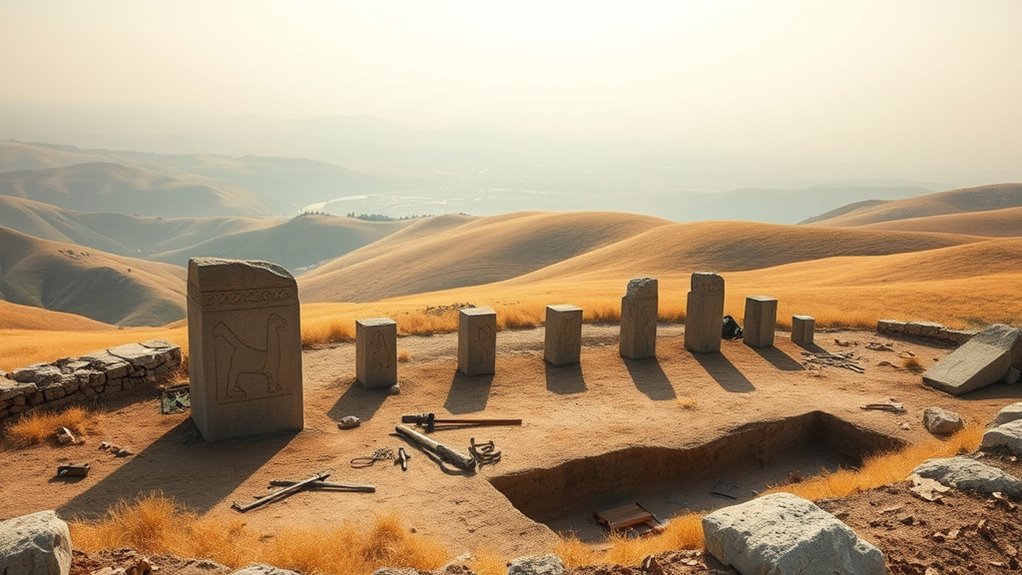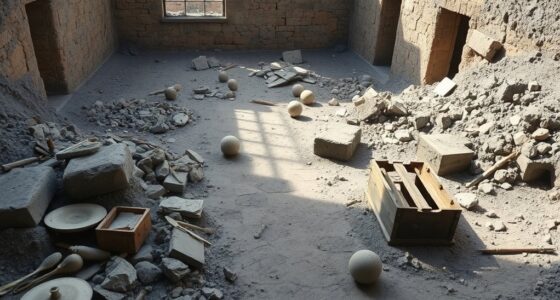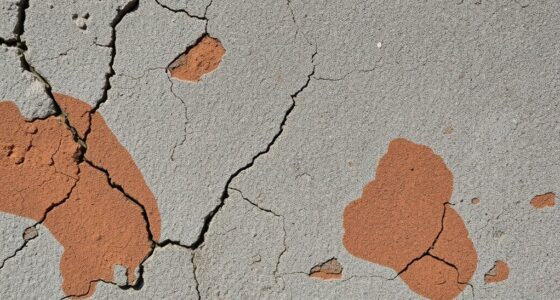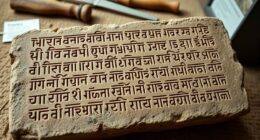Recent discoveries of Göbekli Tepe’s sister sites are changing how you see the Neolithic Revolution. These sites show that early human societies developed more complex cultures earlier than we thought. They suggest multiple centers of innovation and regional diversity in agriculture and social organization. This challenges the idea of a linear progression. If you want to understand how these findings reshape our view of human history, there’s more to explore about their significance.
Key Takeaways
- Recent sister sites to Göbekli Tepe reveal advanced cultural practices earlier than previously believed.
- These sites suggest multiple centers of Neolithic societal development, challenging a linear revolution model.
- Architectural similarities indicate a broader network of early ceremonial centers impacting social structures.
- Findings promote re-evaluation of regional archaeological timelines and the spread of Neolithic innovations.
- The discoveries emphasize complex regional contributions, prompting a rethink of early human societal evolution.

You are trained on data up to October 2023. Recent archaeological discoveries have revealed additional Neolithic sites that challenge traditional understandings of early human societies in the region.
Frequently Asked Questions
How Do Sister Sites Compare in Age to Göbekli Tepe?
You probably wonder how sister sites compare in age to Göbekli Tepe. Using advanced dating techniques, archaeologists find these sites are often just as old or slightly younger, revealing they may share cultural influences. These findings challenge previous ideas about the timeline of the Neolithic Revolution. By analyzing artifacts and construction styles, you see how these sites collectively shaped early human society and spiritual practices.
What Unique Features Distinguish Each Sister Site?
Imagine uncovering a hidden story in ancient stones. Each sister site offers a unique glimpse into human history through its ceremonial architecture and artifact diversity. One might feature intricate carvings symbolizing spiritual beliefs, while another highlights diverse tools reflecting daily life. These differences reveal cultural identities and ritual practices, making each site a distinct chapter in our collective past, whispering secrets of early societies’ creativity and spirituality.
Were Sister Sites Used for Different Purposes Than Göbekli Tepe?
You might wonder if sister sites served different purposes than Göbekli Tepe. Evidence suggests they had varied ceremonial functions, with some acting as ritual centers and others as settlements. Their settlement patterns reveal diverse uses, indicating these sites weren’t solely for worship but also supported daily life. This diversification highlights a complex social landscape during the Neolithic, where ceremonial and residential functions often intertwined across different sites.
How Did Sister Sites Influence Regional Neolithic Development?
You see, sister sites played a crucial role in regional Neolithic development by expanding trade networks and supporting ritual practices. They facilitated the exchange of goods, ideas, and cultural traditions, which fostered social cohesion and technological advancements. These sites often hosted unique ceremonies and communal activities, strengthening regional identities. As a result, they helped shape the broader Neolithic landscape, accelerating societal complexity and cultural diversity across different regions.
Are There Undiscovered Sister Sites Still Waiting to Be Found?
You might wonder if undiscovered sister sites are still hidden beneath the surface. Given the vast areas of ancient landscapes, it’s likely there are hidden artifacts and sites waiting to be uncovered. Such sites could reveal new insights into ancient trade routes and cultural exchanges. Future excavations might expose these hidden artifacts, expanding our understanding of the Neolithic period and the interconnectedness of early communities.
Conclusion
So, next time you marvel at Göbekli Tepe’s grandeur, remember it’s not alone. Its “sister sites” quietly challenge the narrative, whispering that humans might’ve been a tad more inventive—or stubborn—than we give them credit for. Perhaps the true Neolithic revolution wasn’t just about farming or religion, but about our relentless desire to leave behind monumental puzzles, making archaeologists’ jobs just a bit more interesting. After all, who needs simple when you can have complex?









